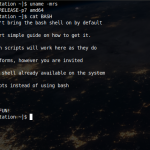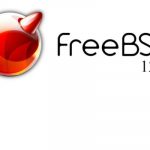Believe it or not the Bash shell does not come installed on the system. By default FreeBSD uses the sh shell (after the rewrite under the BSD license on 1989 of the original Bourne Shell found on UNIX, which had inherited the ‘sh’ name from the original’s Thomson shell), the C shell or the tcsh shell. As on any other UNIX system you can change the shell and install others that … [Read more...]
Search Results for: apache
How to upgrade FreeBSD from version 11.2 up to 12.0
Although the upgrade process is very well described on the FreeBSD handbook you may be looking for a more detailed hands on how to upgrade FreeBSD from version 11.2 up to 12.0 article. We’re going work here on this process, step by step detailing not only how to upgrade but to do it safely. First of all we have to make a distinction between the two natively supported types of … [Read more...]
How to use Fail2ban with WordPress
In a previous article we did an install of Fail2ban on a FreeBSD server. This tool can help us to protect our Wordpress install, independatly from if we are using the FAMP stack or the LAMP stack. As I mentioned on that article Fail2ban is a complementary tool to our firewall. It works by scanning log files and banning IPs suspicious activity reflected on those very logs. If … [Read more...]
WordPress administration over SSL
If you are a Wordpress user or prettend to become one and you have some IT administration knowledge this guide is of your interest. Many hostings already provide easy point and click solutions to administer Wordpress over SSL. However you may be self hosting Wordpress or you’re just a curious person. What is TLS? TLS stands for Transport Layer Security. One implementation is … [Read more...]
How to securely install WordPress on FreeBSD
If you have already read my guide on how to install Wordpress on FreeBSD you will have been a bit disappointed since at the end there is a deceptive paragraph that reads as follows: Now be aware you will set a user name and password for your wordpress install. They will be sent in plain text so anyone in between you and the server (mainly the ISP and the host company) or … [Read more...]



